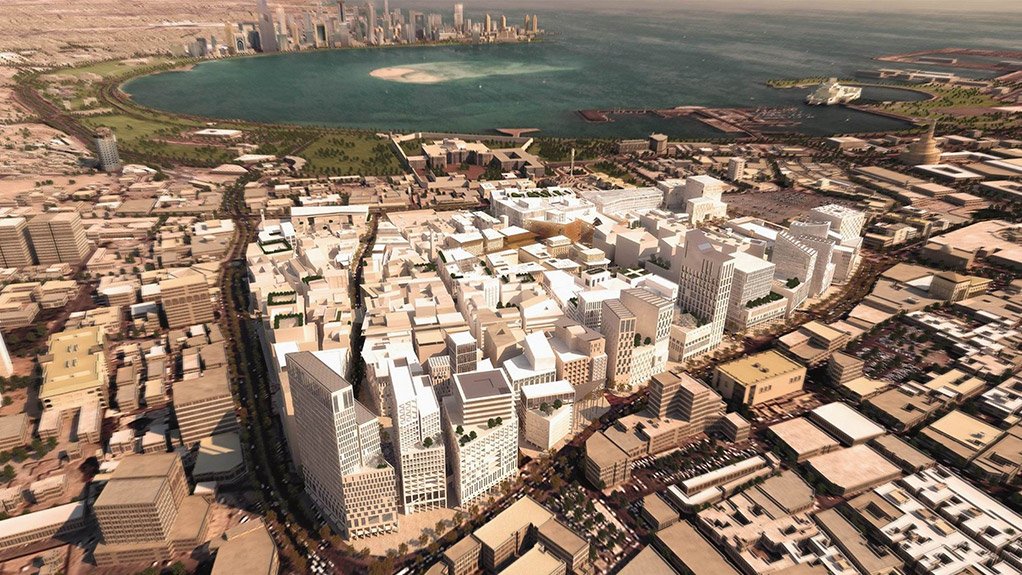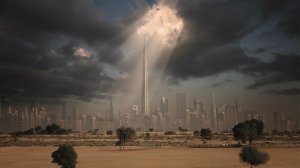Rethinking Cities In ARID Environments
This article has been supplied as a media statement and is not written by Creamer Media. It may be available only for a limited time on this website.
Cape Town’s prolonged water shortage has thrown into sharp relief the need for the city and its residents to be proactive in the long-term management of its water demand and consumption, and to build a more water resilient future.
A new research report by Arup highlights the need for cities in arid and semi- arid climates like Cape Town to not only manage their scarce water resources better, but to promote smarter ways of living in arid urban environments through climate responsive design and infrastructure solutions.
Almost a third of the world’s land surface is classified as ‘arid’ and this area is set to increase as climate change brings more frequent, extreme weather events, such as drought. The authors warn that technologies of the last century, such as air conditioning, have allowed the explosive but unsustainable growth of arid cities. At the same time, many cities are experiencing the Urban Heat Island Effect, where they become hotter than the surrounding rural areas. This is particularly impacting arid cities, increasing water use and reducing their ability to sustain existing standards of living.
The report, Cities Alive: Rethinking Cities in Arid Environments, outlines three key principles in shaping city-building in arid regions for the twenty first century. Cities need to learn from the past and make use of locally adapted, climate-specific design solutions. They need to invest in green and blue infrastructure to increase the resilience of arid cities. Finally, they need to design intelligent buildings and public spaces that respond to the demands of the climate.
“Significantly for developing cities like Cape Town, the report highlights an incremental approach to a water resilient future, setting out low cost and technology, but high impact solutions that cities can implement in the shorter term, as well as longer term investments to secure more equitable access to water and quality of life in arid cities,” comments Aamena Desai, urban designer from Arup’s South African Cities Team.
The report points to examples of initiatives in arid cities that are making them more sustainable, healthier and better places to live, including:
Fog and dew harvesting: new technology is allowing harvesting systems and materials to be optimised to extract large amounts of water, even in arid environments with low levels of humidity. The Sustainability Pavilion at the upcoming Dubai Expo 2020 will use hybrid structures that generate renewable solar energy and capture water from humidity in the air to supply a significant proportion of the pavilion’s water requirements.
Cool pavements: small changes to existing designs can make an impact. For example, a rethink of public spaces could improve the quality of lives for citizens. The City of Los Angeles has begun coating its streets with a special paint, CoolSeal, to reduce the temperature of the city. In an initial test, it has been shown to reduce ambient temperatures by 6.6 degrees Celsius.
Energy efficient buildings: buildings can be designed to play an active role in reducing reliance on air conditioning and mitigating the Urban Heat Island effect. The Al Bahar Towers in Abu Dhabi have a unique dynamic shading system – a modular ‘Mashrabiya’ that opens and closes to provide self-shading as the sun moves around the building. The system is predicted to reduce the solar energy entering the building by 20% – reducing the amount of air conditioning and energy consumption of the building. Work is also underway to develop buildings that have a cooling effect on their surroundings.
Green roofs and walls: these are not just beautiful but provide cities with greater resilience. A Xeriscape approach, using plant species selected to maximise effective shade and shelter, reducing noise, glare, dust and air pollution, can deliver highly functional areas with a microclimate suitable for people to enjoy throughout the year. Green roof designs in arid climates should aim for a larger percentage of hard surfaces and fewer green elements, reducing the need for irrigation water. The Brewbooks Cactus Garden Roof in Los Angeles is a good example of this.
Open air living: Attractive and comfortable public spaces are vital to the success of cities, significantly impacting their social and economic success. In arid regions, the number of public spaces has shrunk dramatically in recent decades. Reversing this trend, the Downtown Project in Las Vegas has aimed to redevelop the city’s old centre, to promote the benefits of a more walkable neighbourhood.
The project has made substantial investments in street art and installations to make walking more interesting and comfortable to encourage people to think beyond the car.
To download the report in full, go to www.arup.com/publications/research
Comments
Press Office
Announcements
What's On
Subscribe to improve your user experience...
Option 1 (equivalent of R125 a month):
Receive a weekly copy of Creamer Media's Engineering News & Mining Weekly magazine
(print copy for those in South Africa and e-magazine for those outside of South Africa)
Receive daily email newsletters
Access to full search results
Access archive of magazine back copies
Access to Projects in Progress
Access to ONE Research Report of your choice in PDF format
Option 2 (equivalent of R375 a month):
All benefits from Option 1
PLUS
Access to Creamer Media's Research Channel Africa for ALL Research Reports, in PDF format, on various industrial and mining sectors
including Electricity; Water; Energy Transition; Hydrogen; Roads, Rail and Ports; Coal; Gold; Platinum; Battery Metals; etc.
Already a subscriber?
Forgotten your password?
Receive weekly copy of Creamer Media's Engineering News & Mining Weekly magazine (print copy for those in South Africa and e-magazine for those outside of South Africa)
➕
Recieve daily email newsletters
➕
Access to full search results
➕
Access archive of magazine back copies
➕
Access to Projects in Progress
➕
Access to ONE Research Report of your choice in PDF format
RESEARCH CHANNEL AFRICA
R4500 (equivalent of R375 a month)
SUBSCRIBEAll benefits from Option 1
➕
Access to Creamer Media's Research Channel Africa for ALL Research Reports on various industrial and mining sectors, in PDF format, including on:
Electricity
➕
Water
➕
Energy Transition
➕
Hydrogen
➕
Roads, Rail and Ports
➕
Coal
➕
Gold
➕
Platinum
➕
Battery Metals
➕
etc.
Receive all benefits from Option 1 or Option 2 delivered to numerous people at your company
➕
Multiple User names and Passwords for simultaneous log-ins
➕
Intranet integration access to all in your organisation





















